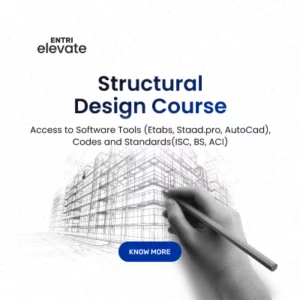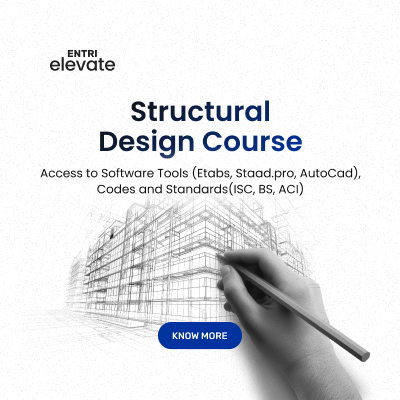Table of Contents
A Structural design career offers unique opportunities to provide creative solutions to practical challenges in architecture. Structural designers focus not only on building design principles, but also on safety, material durability and building appearance. Learning how to become a structural engineer can help you understand if this career is right for you.
What is a Structural Designer?
A Structural designer is a professional designer who helps design plans for large structures. They ensure that the structure is sound, including the foundation, walls and pillars. They can also help to try to restore the security of a pre-existing structure. Structural designers can work on everything from apartment complexes to dams or large sculptures.
What does a Structural Designer Do?
1: What is the primary purpose of structural design?
A structural designer creates digital plans and sketches of construction projects such as bridges or buildings. They work closely with architects, project managers and engineers to focus on the building’s aesthetics, functionality and framework. Structural designers help ensure the structural strength of even large ships and tunnels by considering the materials and design involved in the project. During design and construction, designers consider possible elemental factors such as hurricanes, earthquakes and floods.
Build A Career In Structural Engineering! Get Free Demo Classes!!
Transform Your Career with Our Structural Design Course!
Unlock Your Potential in Structural Design! Gain expert knowledge in designing robust structures and advance your career in the construction and engineering fields. Limited spots available! 🌟
Know MoreFeatures of Structural Design Engineering
Here we look at the benefits of studying structural engineering:
1. Improves Theoretical Understanding
Enrollment in a structural design course offers a deep foundation in the theoretical concepts that support structural analysis and design. Engineers learn about load distribution, material behavior, stress-strain relationships, and structural failure mechanisms. Theoretical knowledge forms the basis for the development of practical skills in civil engineering.
2. Developing Practical Skills
The course teaches practical skills needed to apply theoretical knowledge in today’s world. In order to analyze and design structures for various load combinations and environmental conditions, they will learn to use hand calculations and computer-aided design (CAD) software. These useful capabilities are essential for solving complex construction problems and ensuring the stability and safety of buildings.
3. Mastering Industry Standard Software
This course provides expertise in standard design software packages such as STAAD Pro, ETABS, Revit, SAP2000, etc. These tools are essential for real structural analysis and design tasks and enable engineers to effectively model structures, analyze loads and optimize design solutions. Proficiency in these software packages increases employability and enables engineers to seamlessly integrate into industry.
4. Improves Problem-Solving and Decision-Making Skills
The structural design course teaches engineers to systematically and analytically handle complicated design problems. Engineers learn to identify and prioritize design problems, make informed decisions, and optimize design solutions. These problem-solving and decision-making skills are important in the dynamic field of civil engineering.
5. Increasing Creativity and Visual Expression
Structural design includes aesthetic expression and creativity in addition to scientific calculations and technical principles. Civil engineers must evaluate the visual appeal of structures to ensure that they not only fulfill their intended function, but also blend in with their surroundings.
Build A Career In Structural Engineering! Get Free Demo Classes!!
Why Choose a Career in Structural Design Engineering?
Structural engineering is a challenging and rewarding field that offers a unique combination of creativity, problem solving and technical expertise. If you’re considering a career in this field, here are a few reasons why it’s a smart choice.
Impactful Work: Structural engineers play a key role in the design, construction and maintenance of the built environment. They are responsible for ensuring that the structures they design are safe, efficient and sustainable. This means that the work of a structural engineer has a real and tangible impact on the world and can change people’s lives.
Diverse Career Paths: Structural engineering is a diverse field and there are many different career paths to choose from. Some engineers focus on designing new structures, while others specialize in evaluating and rehabilitating existing structures. There are also opportunities for civil engineers to work in academia, research and consultancy, providing ample opportunities for career growth and development.
Challenging and Engaging Work: Structural engineering requires a combination of creativity and technical skills, making it a challenging and engaging field. Civil engineers must constantly innovate and adapt to changing building materials, construction methods and engineering standards, which keeps the job fresh and exciting.
Good Earning Potential: Structural engineers typically earn salaries that are higher than the national average, and many have the potential to earn even more with experience and specialized training. Additionally, many companies offer flexible work arrangements and great benefits packages, making civil engineering a smart choice for those looking for a well-paying and fulfilling career.
Opportunities for Professional Growth: Structural engineering is a field that values continuing education and professional growth, and many engineers have the opportunity to attend conferences, workshops, and training programs throughout their careers. In addition, there are a number of professional organizations and resources that help civil engineers stay up-to-date on the latest trends, best practices, and cutting-edge technologies.
Transform Your Career with Our Structural Design Course!
Unlock Your Potential in Structural Design! Gain expert knowledge in designing robust structures and advance your career in the construction and engineering fields. Limited spots available! 🌟
Know MoreOpportunities After the Structural Design Course
A career in structural design offers a variety of opportunities for those with a strong foundation in engineering principles and a passion for building durable structures. Below are some popular structural design job opportunities:
• Structural Engineer: Structural engineers are the backbone of the structural design field. They are responsible for the analysis, design and construction management of various structures. They use software tools and their knowledge of engineering principles to create structural designs that are safe and efficient.
• Structural Design Engineer: Structural design engineers specialize in the technical aspects of structural design, such as calculations, analysis and creation of structural plans. They work closely with architects and other engineers to ensure that buildings and other structures are stable and safe.
• Construction Project Manager: Structural design professionals will advance to project management positions. In these roles, they oversee project planning, budgeting and implementation, and ensure that structural design principles are followed throughout the construction process.
• Structural Consultants: Structural consultants provide specialist expertise in structural design and offer advice and guidance to architects, engineers and construction companies. They can work independently or as part of larger consulting firms.
Entri App is a vernacular learning platform that aims at helping people land their dream job by empowering them with the right skill set & expert guidance at an affordable cost. Being India’s one of the fastest-growing e-learning platforms attracting over 1 crore students, Entri offers a wide range of courses to help students prepare for government exams and upskill themselves for various career opportunities.
The Structural Design Course, which is One of Entri’s flagship programs is specifically designed for civil engineers who aspire to excel in their careers. It is really suitable for those who aspire for a high paying office job in India and abroad.
The ‘Structural Design Course’ goes beyond traditional academic learning by providing comprehensive training and guidance. It equips students with the necessary skills and knowledge to thrive in the dynamic field of structural engineering. This valuable opportunity allows students to apply their newly acquired skills in real-world scenarios, enhancing their understanding and employability.
For more details about the course, visit Entri Structural Design Course.
Conclusion
In structural engineering, structural design plays an important role in ensuring the efficiency, stability and safety of buildings, bridges and other structures. Studying structural design in civil engineering courses offers a wide range of benefits and prepares you for a variety of career opportunities in the construction industry. Structural designers shape the built environment by ensuring the integrity and resilience of structures that serve communities and contribute to societal progress.
Transform Your Career with Our Structural Design Course!
Unlock Your Potential in Structural Design! Gain expert knowledge in designing robust structures and advance your career in the construction and engineering fields. Limited spots available! 🌟
Know MoreFrequently Asked Questions
What is the main purpose of structural design?
Structural design is important in civil engineering because it helps to check that the structure is safe. Structural design gives all the vital information regarding foundations, floors, walls, beams, roof types and the quality of materials to ensure that any of the structures built meet all the safety requirements.
Why do people choose structural engineering?
Opportunities for Professional Growth: Structural engineering is a field that values continuing education and professional growth, and many engineers have opportunities to attend conferences, workshops, and training programs throughout their careers.
What are the advantages of structure design?
A good design will increase the strength and rigidity of a structure. It can reduce the building cost of the structure. The primary purpose of a good design is to withstand various loads for the period it is intended to serve its purpose and lifespan.















